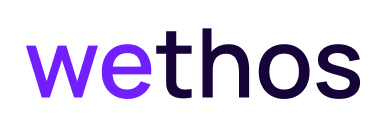Why Freelancers Need a How to Work With Me Guide
You’ve landed a new client, the contract is signed, and you can’t wait to get started.
But before you can dive into the work, it’s important to set the stage for the working relationship by sending your client a “how to work with me” guide.
The purpose of this guide is to identify and communicate boundaries around your process so you can manage expectations and set the relationship up for success.
When creating a guide for clients, it’s important to be honest with yourself. If you’ve never documented your process like this before, you may not have even thought about the way you work best. But now is the time to get clear and honest about what you want out of your client relationships.
Ready to set some boundaries? Here are five elements to include in your “how to work with me” guide.
Working hours
One of the best parts of freelancing is the flexibility that comes with creating a schedule that works for you. However, even if you get your best work done on nights and weekends, you probably don’t want clients reaching out to you then.
This is why it’s important to include your typical work hours in your guide. Your working hours are when clients can get in contact with you and expect to hear back. Set your standard work hours to the days and times that you’re comfortable communicating. Not only does this help protect your time, but it ensures your clients can get a timely response if they reach out during those hours.
Preferred method of communication
While we’re on the topic of communication, the next element to include in your “how to work with me” document is your preferred way of communicating about the project.
Is Slack the best way to get in touch? Or do you prefer to keep things on email? You may even be open to communicating through a project management platform like Monday.com or Asana.
Outlining the best way to contact you prevents things from getting lost in the mix or (unintentionally) ignored.
Work style
Next is your work style. While this could be dependent on the type of services you offer, it’s something to consider if you want to get your best work done for every client project.
Are you super collaborative and want clients to be hands-on throughout the process? Or do you prefer to have a kick-off call, get to work, and then get their feedback? It’s important to identify this before you dive into the project so the client has an idea of what to expect when you get started and at which point in the project timeline they can share feedback.
Meetings or no meetings?
Some projects call for check-in meetings throughout the process while others can be handled asynchronously, but either way, it’s up to you to let potential clients know what you’re willing to participate in. Are you available to join team meetings? How far in advance should they be scheduled? After all, you’re not in an employee-employer relationship so it’s up to you to set those boundaries.
How you prefer feedback
Once you’ve set the stage for how you work and communicate, the last piece the client needs to know is how you prefer project feedback.
If you’re a writer, you most likely prefer that the client adds their feedback directly to the Google Doc. Or if you’re a designer, maybe you prefer to hop on a walk-through call and collect their feedback as you show them the design in real-time.
Your “how to work with me” guide may include more information — some documents even have personal elements like what motivates you, your vision, etc. — but these elements are a great place to start and set your relationships up for success.

